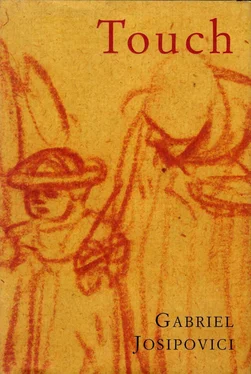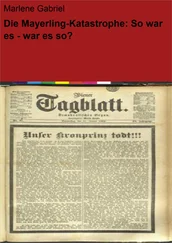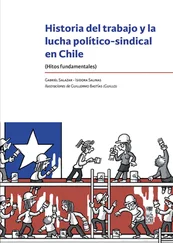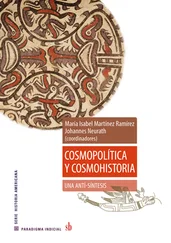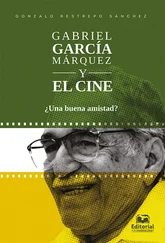Gabriel Josipovici - Touch
Здесь есть возможность читать онлайн «Gabriel Josipovici - Touch» весь текст электронной книги совершенно бесплатно (целиком полную версию без сокращений). В некоторых случаях можно слушать аудио, скачать через торрент в формате fb2 и присутствует краткое содержание. Год выпуска: 1996, ISBN: 1996, Издательство: Yale University Press, Жанр: Современная проза, на английском языке. Описание произведения, (предисловие) а так же отзывы посетителей доступны на портале библиотеки ЛибКат.
- Название:Touch
- Автор:
- Издательство:Yale University Press
- Жанр:
- Год:1996
- ISBN:0300066902
- Рейтинг книги:5 / 5. Голосов: 1
-
Избранное:Добавить в избранное
- Отзывы:
-
Ваша оценка:
- 100
- 1
- 2
- 3
- 4
- 5
Touch: краткое содержание, описание и аннотация
Предлагаем к чтению аннотацию, описание, краткое содержание или предисловие (зависит от того, что написал сам автор книги «Touch»). Если вы не нашли необходимую информацию о книге — напишите в комментариях, мы постараемся отыскать её.
Touch — читать онлайн бесплатно полную книгу (весь текст) целиком
Ниже представлен текст книги, разбитый по страницам. Система сохранения места последней прочитанной страницы, позволяет с удобством читать онлайн бесплатно книгу «Touch», без необходимости каждый раз заново искать на чём Вы остановились. Поставьте закладку, и сможете в любой момент перейти на страницу, на которой закончили чтение.
Интервал:
Закладка:
Cole comments on this:
He has remembered and relearnt a limited repertoire of non-verbal communication which he now uses consciously when appropriate. To sit and talk to him is to see the arms and hands lifted up and down in front of him elaborating and extending the points made. On closer inspection, however, we realise that though the points are emphasised with the hands the fingers remain relatively still.
I cannot help thinking about Kafka when I read about Ian Waterman. Not only the ape in ‘A Lecture to an Academy’, who deliberately and self-consciously learns the gestures and speech of men so as to escape the fate which would otherwise await him, of living out his life in a cage, but also Kafka's own remark in a letter to Milena: ‘Nothing is granted to me, everything has to be earned, not only the present and the future, but the past too — something after all which perhaps every human being has inherited, this too must be earned, it is perhaps the hardest work.’
Of course in one sense there is nothing at all in common between Ian Waterman and Franz Kafka, and it may seem almost insulting to the former even to think of comparing them. Kafka's was a set of feelings, Waterman's is a physical condition, and until the onset of his tuberculosis Kafka was a perfectly ordinary human being who, we might think, with a little bit of luck might have led a happy enough life. We might even feel that his continual moaning is an indication only of self-pity and deserves nothing but contempt. But I don't think our fear of sentimentality and our respect for the horror of Ian Waterman's situation and his nobility of spirit in fighting it with such determination should inhibit us from considering the analogy. For what such a consideration reveals is that tradition, from which Kafka feels himself so totally and irrevocably cut off, functions in a way that is precisely analogous to proprioception — it is an unconscious set of habits and practices which allows us to function and which only reveals itself as the vital thing it is when we suddenly find ourselves deprived of it. Robbed of proprioception by his illness, Ian Waterman finds that he can function only by imitating, without feeling it, what others do instinctively; robbed of tradition by complex social changes and by his personal situation, Kafka finds that each step he takes, in both life and art, has to be a conscious one, each gesture and phrase to be planned and chosen with care and deliberation. In both cases there is the profound desire to go on, not to succumb to this thing that has overtaken them, and in both what keeps them going is pride and a kind of trust against the odds. For both of them every day is a marathon, a test of endurance and resolve.
Ian Waterman's story is of course neither allegory nor exemplum. It is itself. He is himself. Nevertheless, it helps us understand the nature of the artistic difficulties encountered by an Eliot, a Kafka, a Stravinsky, a Picasso, as they tried to live their lives as artists in our century.
At the same time the study of proprioception, of that kinetic melody or the body's ability to find its own rhythm, its knowledge which is beyond any knowledge which conscious thought can offer, should also help us understand something the neurologists, for obvious reasons, are not particularly interested in, the difference between being heavy-handed and having a light touch, between being an indifferent pianist or footballer or tennis player and a great one. For while most of us are indeed blessed with the ability to walk and run and strike the right notes on a piano and hit a ball, some are more gifted in these spheres than others, and even those not specially gifted have experienced, at one time or another, moments when they have felt themselves to be running, swimming, hitting a ball or striking the keys of a piano as, so to speak, we were all meant to run, swim and strike a ball or the keys of a piano. At such moments we feel ourselves to be more ourselves than is normally the case, more actively a part of the world. At such moments, one could say, we understand instinctively what it means to exist, that miracle which most of the time we simply take for granted.
20 Kinetic Melodies (2)
Football, in Egypt (where I learnt to play it at the age of five), as in South America, is a game of touch and skill. The reasons are obvious: the ground is hard and dry, the ball is always light, and such conditions favour the quick and nimble rather than the bulky and powerful, the good dribbler prepared to take people on rather than the heavy tackler intent only on blocking the progress of the opposition. Those were the days of 2–3–5 formations, 2 backs, 3 halves, 2 wings, 2 inside-forwards and a centre-forward. No one had heard of total football, neat triangles, Christmas trees or diamonds: the idea was to get the ball to the forwards as quickly as possible and let them get on with it. Watching us, present-day managers would have had a fit: when the opposition was attacking we forwards hung around the half-way line, waiting and hoping. Once we had the ball it was up to us to make for the goal as quickly as possible and score. They were high-scoring games, I remember, with twenty-two small boys on a full-sized pitch and a diminutive goalkeeper defending a full-sized goal. And they were never boring.
There were magical days when I could do no wrong, scoring three or four of the six or seven goals which earned us a narrow victory and setting up at least two of the others. On days like that it seemed so easy to swerve round the half-backs, cut inside the backs and send the ball high into the corner of the net. There must have been bad days, of course, when nothing would go right, when I never got the ball or could do nothing with it when I did get it. But my memory has blotted these out as effectively as mothers are said to blot out the pains of childbirth.
What does having ‘a good touch’ mean on the football field? It means having an instinctive sense of the ball as it comes to you, its speed and trajectory; it means knowing instinctively how to position yourself to receive a pass most effectively, when to linger and when to accelerate; it means feeling the ball as a part of yourself not just when it's at your feet but when it's at the other end of the field; it means internalising the pitch, sensing the game as good chess players are said to do the board before them, as a series not of static positions but of lines of force.
No one knows how they are going to perform when they step on to a football field or a tennis court. That is part of the beauty of sport, why it is life in microcosm, life compressed and heightened by rules and by the limits of space and time. Once you are out there you are on your own, the coaching, the training, the team-talks, the personal advice no longer relevant; only in the course of the game do you discover how good or bad you are (on that particular day).
This is even truer of tennis than it is of football, for in tennis you can't complain that you didn't get the right passes or lost because someone else was not on form or made a crucial blunder. In tennis there is no one but yourself to blame, though it does happen that one comes up against an opponent who, for the duration of the match, seems himself to be caught up in a dream of perfection and can do no wrong.
We talk of touch players in tennis much more than in football and all those who follow the game have a list of such players. Mine would include Okker, Goolagong, Nastase and McEnroe. But all the great players have touch. They all internalise the court instinctively, so that the game is not so much played out there where the spectators see it as, somehow, ‘in there’, in their bodies. Watching Hoad or Laver at their rampant best was like being invited into a dream. They seemed always to pick the right shot to play and it seemed that they not so much ran for the ball as that the ball was inevitably drawn into the centre of their racket.
Читать дальшеИнтервал:
Закладка:
Похожие книги на «Touch»
Представляем Вашему вниманию похожие книги на «Touch» списком для выбора. Мы отобрали схожую по названию и смыслу литературу в надежде предоставить читателям больше вариантов отыскать новые, интересные, ещё непрочитанные произведения.
Обсуждение, отзывы о книге «Touch» и просто собственные мнения читателей. Оставьте ваши комментарии, напишите, что Вы думаете о произведении, его смысле или главных героях. Укажите что конкретно понравилось, а что нет, и почему Вы так считаете.
